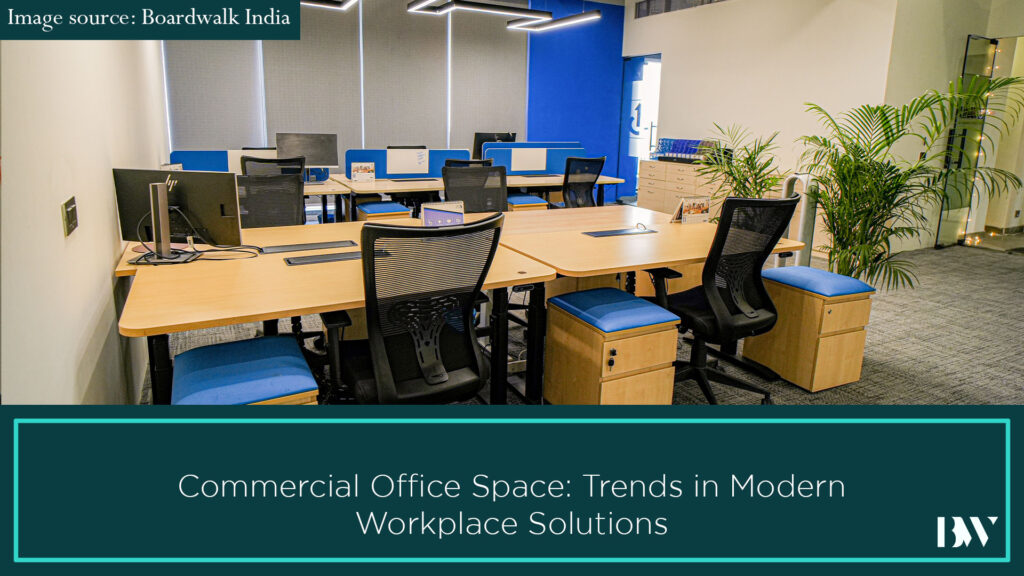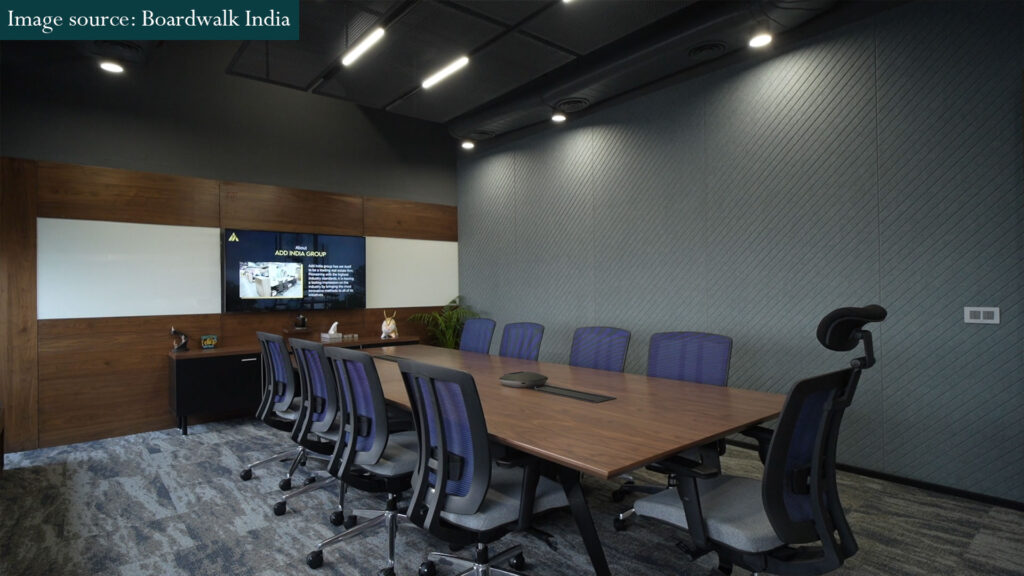Commercial Office Space: Trends in Modern Workplace Solutions

There are now differences between conventional and modern ideas of what a commercial office space is and should be because of changes in how, when, and where people work. However, businesses can identify chances to enhance worker satisfaction and increase output within these areas. Facility and workplace managers can create workplaces that experience less traffic overall while better supporting the connection and collaboration workers need to improve their well-being and boost productivity by adjusting to new work trends and utilising the appropriate data.
Table of Contents:
- Hybrid workplaces: emphasising design and collaboration areas
- Sustainability: Natural light and making the commercial office space more energy efficient
- Smart commercial office space: Using technology to make physical commercial office space more accessible
- Modern commercial office space design: Amenities that support employee well-being

Hybrid workplaces: emphasising design and collaboration areas
Work used to be closely correlated with location. Commercial office space workers occupied rows of desks beginning and terminating at predetermined, standardised times, while factory workers punched in using timecards. However, the hybrid approach allows employees to combine remote and in-commercial office space work, providing them greater flexibility to select the workspaces that suit them best. They purposefully come to the commercial office space to look for things that they cannot acquire at home.
Employees come to the commercial office spaces to connect and collaborate, according to Eptura’s continuing study into work trends that is reflected in the Workplace Index reports. Many people look for the peace and quiet of a home office when working intently and efficiently. People, however, prefer to be in the same room while forming business connections and coming up with ideas for new initiatives.
Compared to a hybrid workplace, a traditional workplace can hold more employees. Large floor plans can be reduced by businesses to accommodate fewer workers. Additionally, they are free to rethink the remaining area. For instance, a fully furnished café and informal lounging areas are made possible by fewer cubicles and a more open floor plan. Additionally, the commercial office spaces can have more flexible work areas like cosy booths and chairs or even treadmills at stand-up workstations.
The hybrid model has an effect on the actual commercial office space by creating a space that serves as a social hub for communication between people. Breakout areas and flexible commercial office spaces—whether they be conference rooms, cafés, or lounges—are becoming more common in hybrid commercial office space arrangements. The ultimate objective is to assist staff members’ well-being and foster teamwork.
Sustainability: Natural light and making the commercial office space more energy efficient
Companies must respond swiftly and judiciously to initiatives, as governments throughout the world set and monitor environmental targets. Employee demand to work for companies with a solid environmental reputation is also increasing. The current trends in commercial office space design have been impacted by the drive for sustainability.
There is far more to a sustainable architecture than just an commercial office spaces layout with recycling bins. It entails fulfilling new requirements and taking a comprehensive approach to the wellbeing of building occupants. Environmentally friendly commercial office spaces design enhances the quality of our air, natural light, and water. Businesses can select eco-friendly gadgets like water coolers, vending machines, and printers that use less energy.
Sustainability is a broad issue, but it may be approached in smaller phases. Companies can adopt smaller, more manageable green initiatives that, when combined, have a greater overall impact than a single, massive effort.
Businesses can construct sustainable workplaces by incorporating:
- Repurposed furniture
- High-recycled content materials
- LED lighting; paperless regulations
- Reusable plates and cups for coffee
An additional crucial component of adopting sustainability and demonstrating a dedication to the welfare of the workforce and the environment is obtaining outside certification. Excellent certifications for evaluating the sustainability of buildings include BREEAM and LEED. Both are aware that creating a space that is ecologically conscious enhances quality of life. The best work is inspired by sustainable designs, which also support our bodies and foster community.
Smart commercial office space: Using technology to make physical commercial office space more accessible
Workplace design, data, and technology are all combined in smart commercial office spaces. In particular, smart technology gathers information on buildings to support well-informed design choices. This involves employing sensors to keep an eye on the amount of natural light, space usage, and air quality in order to better understand how spaces are used and make adjustments as necessary.
A business could, for instance, install human-centric smart lighting (HCL), a system that produces lighting that simulates daylight. Given the advantages of HCL, like enhanced worker productivity and focus, more businesses are looking to use this innovative technology.
Workplace design is directly impacted by the occupancy levels across desks that a facility management may detect with the use of smart technologies, like desk booking. This information aids in determining the ideal number of workstations for a company, their optimal location, and creative uses for unused desk space. The design of modern commercial office space reflects this, with more areas for socialising and relaxation as well as larger corridors and fewer desks.
Modern commercial office space design: Amenities that support employee well-being
Businesses have come up with innovative ways to use the remaining empty floor plates and buildings as a result of remote and hybrid work. They make an effort to combat worker burnout by using a contemporary and commercial office space layout.
Many people over prioritise their work and lack a self-care system, refusing to take time off and working excessive hours. However, businesses can address this problem by making investments in reservable amenities.
There are several contemporary and commercial office spaces with built-in workout centres. To socialise and decompress, employees can get together for fitness classes or workouts with their coworkers. Programs that include yoga and meditation have proven to be highly effective in preventing burnout.
Other conveniences found in contemporary layouts are:
- Drop-in daycare
- Game room
- Quiet room
- Meditation
An improved arrangement can transform the commercial office space into a space that encourages self-care and increases concentration. When the employee experience is the focal point of the commercial office spaces layout, the hybrid model promotes work-life balance.
Conclusion
Both modern life and our workplaces have undergone significant transformation in recent years. The trend toward hybrid work is here to stay, and as more businesses embrace this new paradigm, more workspaces will be redesigned. Employers can make investments in the well-being of their workforce while providing facilities that maximise utilisation and increase productivity by downsizing buildings and reducing real estate expenses. A workplace solution that gathers the information required to build it and the flexibility required by employees to maximise their productivity is at the heart of a modern commercial office space.
For more information on commercial office space, trends in modern workplace solution, visit us at www.boardwalkindia.com
